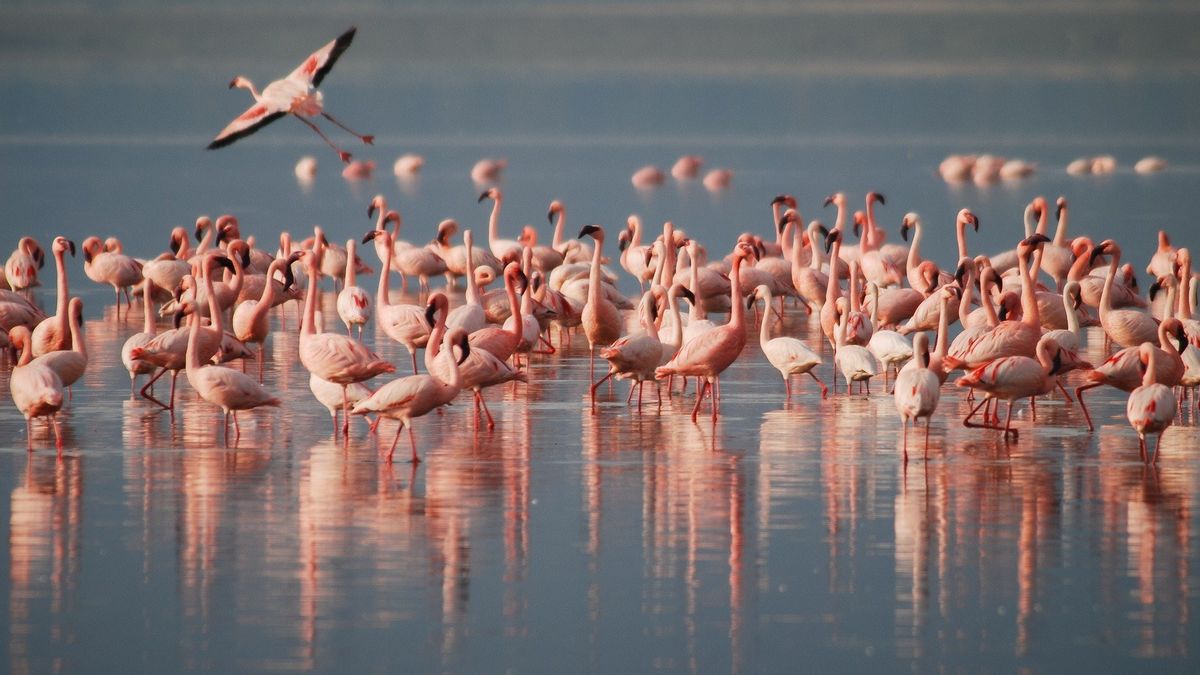JAKARTA - Thousands of flamingos fill lakes and rivers in Navi City, Mumbai, India. This incident occurred in line with the implementation of a national lockdown in India to curb the spread of the COVID-19 virus since March 25.
Quoting the South China Morning Post, a massive reduction in the number of human activities outside the home has made air and water quality cleaner. This is what then brought tens of thousands of flamingos back to India.
"If you ask the positive side of the lockdown in India, it's really amazing. I can see how nature regenerates and recovers. I can see the birds in the wild again," said Uday Purohit, a resident of Navi, Mumbai.
This is because flamingos usually migrate to other areas every year. Now, however, the birds can enjoy longer periods of water and algae, which flamingos feed on before migrating.
Clean Air Portraits in India
Not only did thousands of flamingos arrive. The strict application of lockdowns due to COVID-19 has also succeeded in making the air in India cleaner. The pollution that normally covers parts of India is slowly disappearing.
As quoted from Space, the level of air pollution in the country has fallen sharply. Especially since the Indian government strictly prohibits all forms of community activities in implementing self-quarantine in their homes.
The Indian government, even asked all forms of non-essential businesses to be closed temporarily. Factory activities and transportation trips are limited to a minimum, while practicing social distancing or physical distancing.
As a result, NASA satellites detected the lowest reduction in air aerosol (pollution) levels in northern India in the last 20 years. In fact, aerosols are generated from the activities of motorized vehicles and factories that produce air pollution.
"We knew we would see changes in the composition of the atmosphere in many places during the lockdown. But I have never seen such low aerosol values on the Indo-Gangetic Plains at this time of year," said University Space Research Association (USRA) scientist at the Marshall Center for Space Flight. NASA, Pawan Gupta.
In recent years, high levels of aerosols in urban areas have made air quality in India unhealthy. Satellite imagery observed by the Moderate Resolution Imaging Spectroradiometer (MODIS) instrument on the Terra satellite shows a drastic drop in aerosol levels in the air.

The figures above show the decrease in the density level of air pollution that occurred in India between March 31 and April 5 each year from 2016 to 2020. The air pollution level in India is slowly decreasing significantly.
Although there has been no further research on the effects of lockdown on nature. However, weather factors and wind movements also have an impact on reducing aerosol levels in the air.
"The tricky part with understanding aerosols is that particles can move based on wind and other meteorological patterns. You have to decipher what human fingerprints cause versus meteorological factors," said program leader for NASA's MODIS aerosol product, Robert Levy.
This condition is similar to what happened in China and Italy. Where the level of air pollution has decreased quite drastically since the implementation of the lockdown due to COVID-19.
Even so, India will still close its country's activities due to the lockdown until May 3. Where COVID-19 has infected 21,797 people and made 686 of them die as of April 24.
The English, Chinese, Japanese, Arabic, and French versions are automatically generated by the AI. So there may still be inaccuracies in translating, please always see Indonesian as our main language. (system supported by DigitalSiber.id)








